Understanding the Parts of a Gun: A Beginner's Guide

Whether you're considering purchasing your first gun or simply want to expand your knowledge, knowing the basic parts of a firearm is crucial.
Understanding the parts of a gun and how they work will not only better prepare you to choose a weapon that meets your needs, but knowing how each part functions can improve your overall shooting experience.
But there’s a lot to know.
In this comprehensive guide, we'll break down the anatomy of various types of guns, including pistols, revolvers, rifles, and shotguns. By the end of this article, you'll have a solid grasp of gun part names and their functions, setting you on the path to becoming a more informed and confident shooting enthusiast.
So, let's dive in and explore the fascinating world of firearm components!
What Are the Different Types of Guns?
Before we delve into the specific parts of each firearm, let’s talk a bit about the different types of guns we’ll be covering.
Pistols: These are handheld guns designed to be fired with one hand. Most modern pistols are semi-automatic, meaning they automatically load the next round after firing. These are the most common types of handguns used today and are the kind you see most law enforcement officers and civilian concealed carriers utilizing. (Think: James Bond’s gun.)
Revolvers: Another type of handgun, revolvers are distinguished by their rotating cylinder that holds multiple rounds of ammunition. Although not as common, some people do conceal-carry revolvers as they’re known for being easier to operate. (You know, like the ones in your favorite John Wayne or Clint Eastwood western.)
Read More: Do People Still Carry Revolvers?
Rifles: These are long guns designed to be fired from the shoulder, typically used for long-range shooting and hunting. There are actually several different types of rifles, which we’ll get into later on (for now, picture anything from the AR-15 in Scarface to the Winchester 1892 seen in The Magnificent Seven).
Shotguns: Also long guns, shotguns are characterized by their ability to fire shells containing multiple pellets or a single slug. Shotguns are often used for hunting, trap shooting, and even home defense. (You may recognize these from some pretty cool Terminator and Jurassic Park scenes.)
Now that we have a basic understanding of the different types of guns, let's explore the parts of each in detail.
Basic Parts of a Gun
Although each type of gun has its own unique design and components, there are some parts of a firearm that are found across the board. In this section, we’ll cover all the standard parts that you’ll see in every type of handgun or long gun, then we’ll jump into the pieces that set them apart next.
Frame/Receiver
The frame, also known as the receiver, is the main body of a firearm, serving as the foundation to which all other parts are attached or housed. It's typically made of metal or polymer and contains the firing mechanism. In handguns, the frame includes the grip, while in long guns, it connects to the stock. The frame also often houses the magazine well in firearms that use detachable magazines.
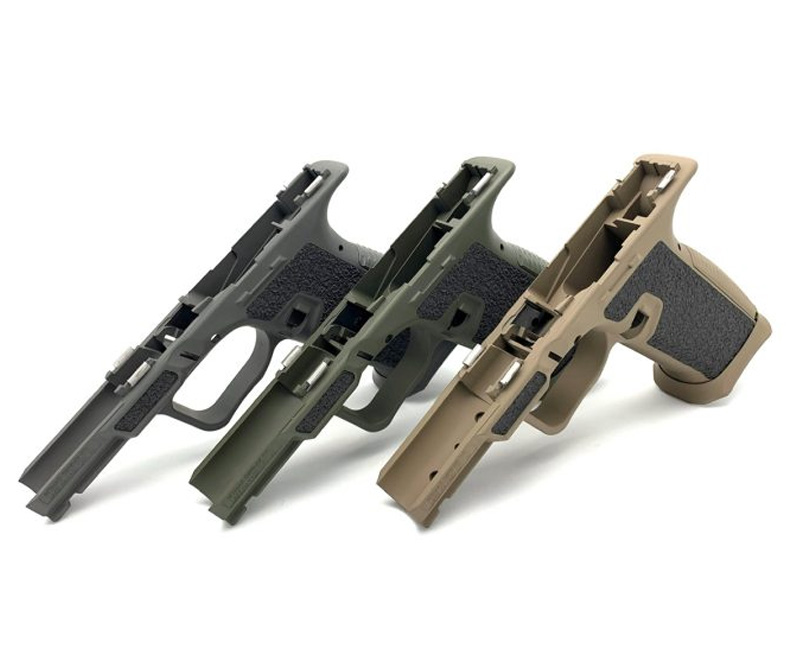
Barrel
The barrel is the metal tube through which the projectile travels when the gun is fired. The barrels of many rifles and handguns are rifled on the inside, meaning they have spiral grooves that impart spin to the bullet, improving accuracy and stability in flight. Shotgun barrels are usually smooth-bore, though some specialty models have rifled barrels. The length and construction of the barrel can significantly affect a firearm's performance, accuracy, and legal classification.
Read More: What Is Rifling, and Why Does It Matter?
Muzzle
The muzzle is the front end of the barrel where the projectile exits.
Breech
The breech is the rear end of the barrel that connects to the action. It is the opening into which ammunition is loaded.
Trigger
The trigger is the lever that, when pulled, initiates the firing sequence. It's connected to the firing mechanism inside the frame. The weight and feel of the trigger pull can greatly impact shooting accuracy and comfort. Triggers can be single-action, requiring the hammer to be manually cocked before each shot, or double-action, which cocks and releases the hammer with a single pull.
Trigger Guard
The trigger guard is a loop of metal or polymer that surrounds the gun's trigger. This part of the frame is designed to prevent accidental discharge by protecting the trigger from unintended contact.
Grip/Stock
In handguns, the grip is the portion of the frame that you hold onto when firing. In long guns, this is called the stock. It's designed to provide a secure and comfortable hold, often featuring texturing or checkering to enhance stability. Stocks in rifles and shotguns extend to the shooter's shoulder, helping to absorb recoil and provide a stable shooting platform.
Sights
Sights help the shooter align the firearm with the target. They can range from simple fixed iron sights to adjustable sights, fiber optic sights, or mounting systems for optics like scopes or red dot sights. The complexity and type of sights can vary greatly depending on the weapon’s intended use.
Hammer
The hammer is a component found in many firearms that's responsible for striking the firing pin or, in some cases, directly striking the primer of a cartridge. In external hammer designs, it's visible and can often be manually cocked. In hammerless designs, the hammer is enclosed within the frame or slide, providing a smoother profile. Some key points about hammers:
- In single-action firearms, the hammer must be manually cocked before each shot.
- In double-action guns, pulling the trigger both cocks and releases the hammer.
Some modern weapons, particularly many semi-automatic pistols, use a striker instead of a hammer. A striker is essentially a spring-loaded firing pin that combines the functions of both a hammer and firing pin.
Action
The action is the heart of any firearm, comprising the parts that load, fire, and eject cartridges or shells. It's essentially the operating system of the gun. There are several types of actions, including:
- Bolt-action: Common in rifles, where a bolt is manually operated to load and eject rounds.
- Lever-action: Uses a lever to cycle the action, typically found in some rifles and carbines.
- Pump-action: Often seen in shotguns, where a sliding forend is used to cycle the action.
- Semi-automatic: Uses the energy from the fired round to automatically eject the spent case and load a new round.
- Break-action: Hinges open to allow loading and unloading, common in some shotguns and hunting rifles.
- Revolver-action: Uses a rotating cylinder to align chambers with the barrel.
Each type of action has its own unique mechanism, but all serve the basic function of readying the firearm for the next shot.
Safety
Many, though not all, guns feature a safety mechanism to prevent unintended discharge. The location, type, and operation of the safety can vary between different firearm models. Some common types include manual thumb safeties, grip safeties, and trigger safeties.
Firing Pin/Striker
The firing pin or striker is the component that strikes the primer of the cartridge, initiating the firing sequence. In hammer-fired guns, the firing pin is typically a separate component struck by the hammer. In striker-fired weapons, the striker itself acts as the firing pin.
Chamber
The chamber is the portion of the barrel where the cartridge or shell sits before firing. It's precisely sized to match the specific caliber or gauge of ammunition the firearm is designed to use. In revolvers, the cylinder contains multiple chambers.
Ejector/Extractor
These components work together to remove spent casings from the chamber after firing. The extractor typically holds onto the rim of the cartridge case, while the ejector provides the force to expel the case from the gun. In break-action firearms, these may operate manually when the action is opened.
Ejection Port
This is an opening in the receiver where spent cartridge cases are ejected after firing.
Magazine
A magazine is a device or holding area where ammunition is stored in a firearm. The purpose of a magazine is to hold ammunition ready for feeding into the chamber of the gun. There are several types of magazines:
- Box magazines: These can be detachable or integral to the weapon. They're common in many rifles and semi-automatic pistols.
- Tubular magazines: Often found in shotguns and some rifles, these hold ammunition in a tube typically located under the barrel.
- Drum magazines: These are high-capacity, cylindrical magazines sometimes used with rifles or shotguns.
- Internal magazines: Built into the firearm and often loaded through the top of the action, common in some rifles.
- Revolving cylinders: While not typically called magazines, the cylinders in revolvers serve a similar purpose of holding multiple rounds ready for firing.
Magazines can vary greatly in capacity, from just a few rounds to 30 or more, depending on the gun design and legal restrictions. The type and capacity of a magazine can significantly affect a firearm's functionality and intended use.
Read More: What’s The Difference Between Clip And Magazine?
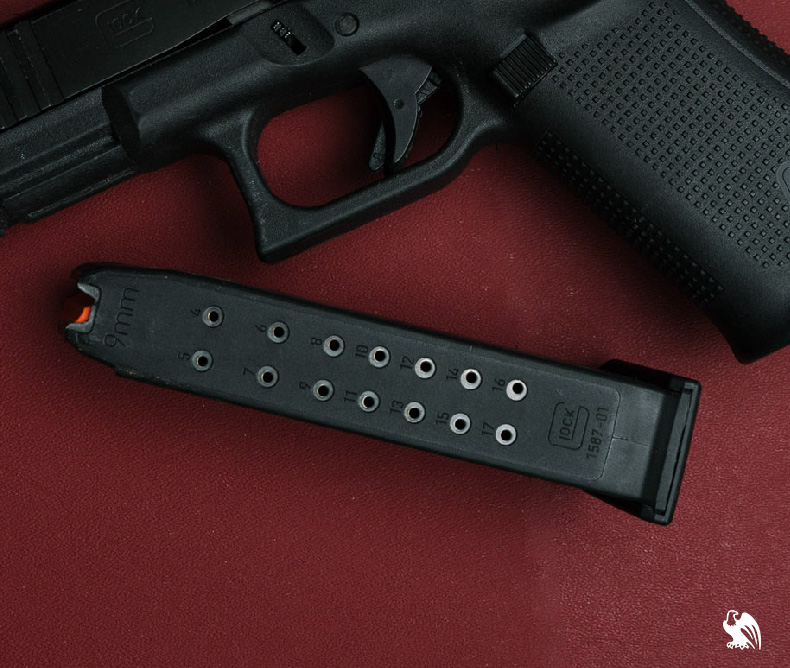
Magazine Well
The magazine well is the opening in the frame or receiver where the magazine is inserted. It's designed to guide the magazine smoothly into place so it can properly feed ammo into the chamber.
Sear
The sear is a critical internal component that holds the hammer or striker in the cocked position until the trigger is pulled. When the trigger is activated, the sear releases, allowing the hammer to fall or the striker to move forward, striking the firing pin and igniting the primer of the cartridge.
Parts of a Pistol
Pistols are popular handguns known for their compact size and ease of use. Let's break down the key parts of a semi-automatic pistol.
Magazine Release
This is a button or lever, typically located near the base of the grip, that when pressed allows the magazine to be removed from the pistol for reloading or unloading.
Slide
The slide is the upper portion of the pistol that moves back and forth during firing. It houses the barrel and contains the firing pin or striker. When the pistol is fired, the slide moves rearward, extracting and ejecting the spent cartridge case. This rearward motion also cocks the hammer or striker and compresses the recoil spring. As the slide returns forward, driven by the recoil spring, it strips a new round from the magazine and chambers it, readying the pistol for the next shot. The slide also typically houses the front and rear sights and may include serrations on its sides to provide a better grip when racking.
Takedown Lever
This lever allows for the disassembly of the pistol for cleaning and maintenance. Its location and operation vary between different pistol models.
Slide Stop
Also known as the slide release, this lever holds the slide open when the last round is fired or when manually engaged. Pressing it allows the slide to return forward, chambering a new round if a loaded magazine is inserted.
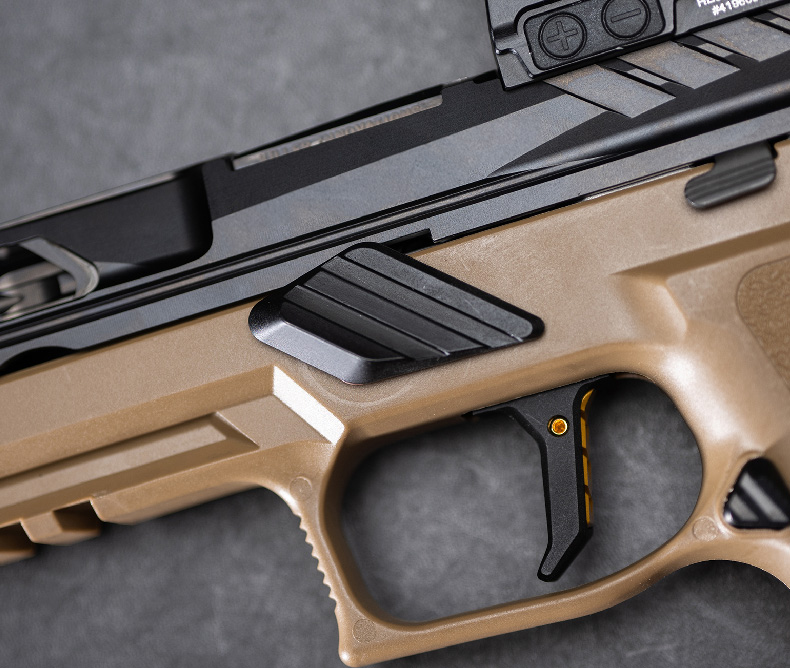
Accessory Rail
The accessory rail, often referred to as a Picatinny or Weaver rail, is a standardized mounting platform typically located under the barrel on the frame. It allows for the attachment of various accessories such as lights, lasers, or other tactical equipment. This feature enhances the versatility of the pistol, making it adaptable for different uses and environments.
Guide Rod
The guide rod is a component that provides stability and guidance for the recoil spring. It ensures smooth operation of the slide and helps maintain consistent pressure during the firing cycle. Some pistols feature captured guide rod assemblies, which combine the guide rod and recoil spring into a single unit for easier disassembly and reassembly.
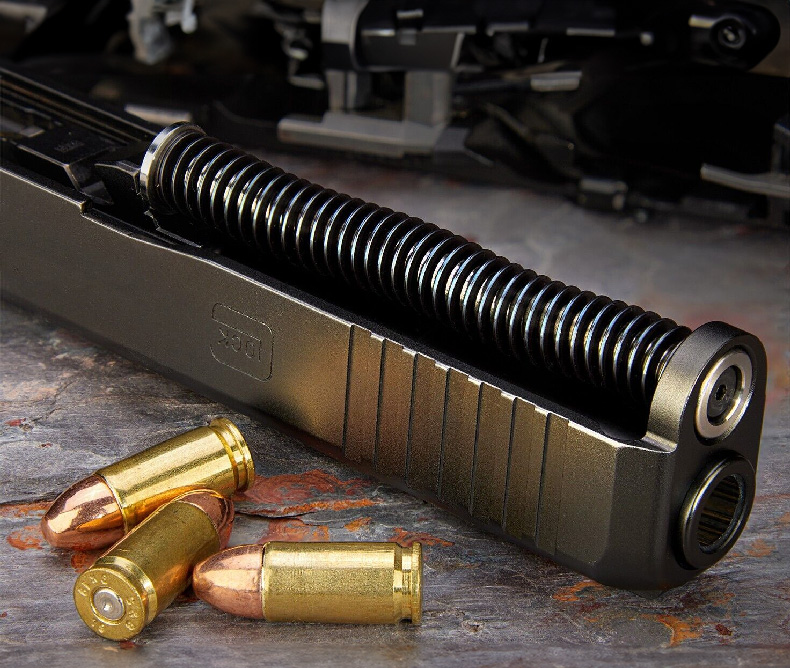
Parts of a Revolver
Revolvers, with their iconic rotating cylinder, have a unique set of components. Let's explore the parts that make up these classic handguns.
Cylinder
The cylinder is perhaps the most distinctive feature of a revolver. It's the rotating part that holds the ammunition, typically containing five to eight chambers, each holding one round.
Ejector Rod
The ejector rod is used to remove spent cartridges from the cylinder. When pushed, it activates the extractor, which lifts all cartridges (spent or unfired) out of the cylinder simultaneously.
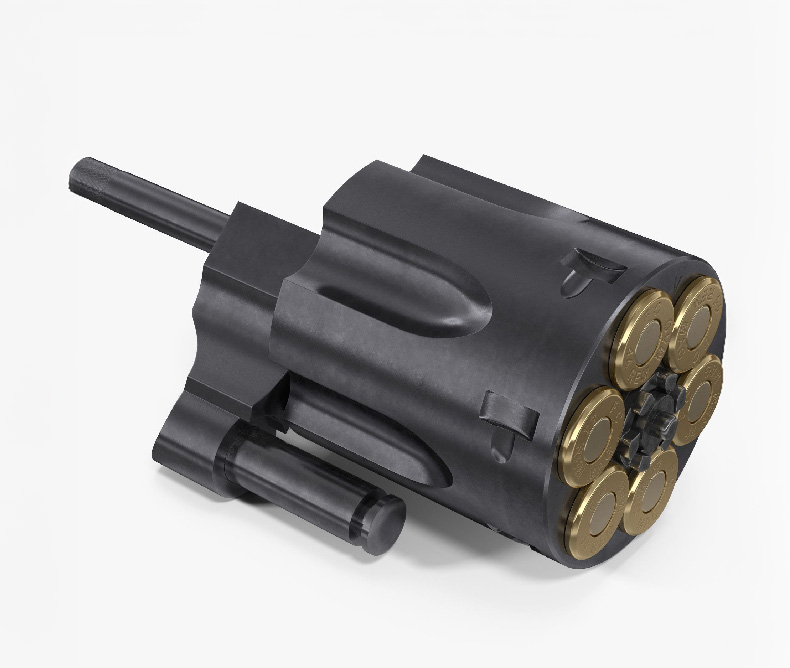
Cylinder Release
This is a latch or button that, when activated, allows the cylinder to swing out from the frame for loading, unloading, or cleaning.
Crane
The crane is the arm that the cylinder swings out on, allowing you to load and unload the revolver. It's a critical component that ensures proper alignment of the cylinder with the barrel and frame when the revolver is closed. The crane is attached to the frame and supports the weight of the cylinder, allowing it to pivot smoothly for easy access to the chambers.
Yoke
The yoke, also known as the crane yoke or cylinder yoke, is part of the cylinder assembly that connects the cylinder to the crane. It supports the cylinder and allows it to rotate freely when the revolver is closed. The yoke plays a crucial role in maintaining proper timing and alignment of the cylinder with the barrel and frame.
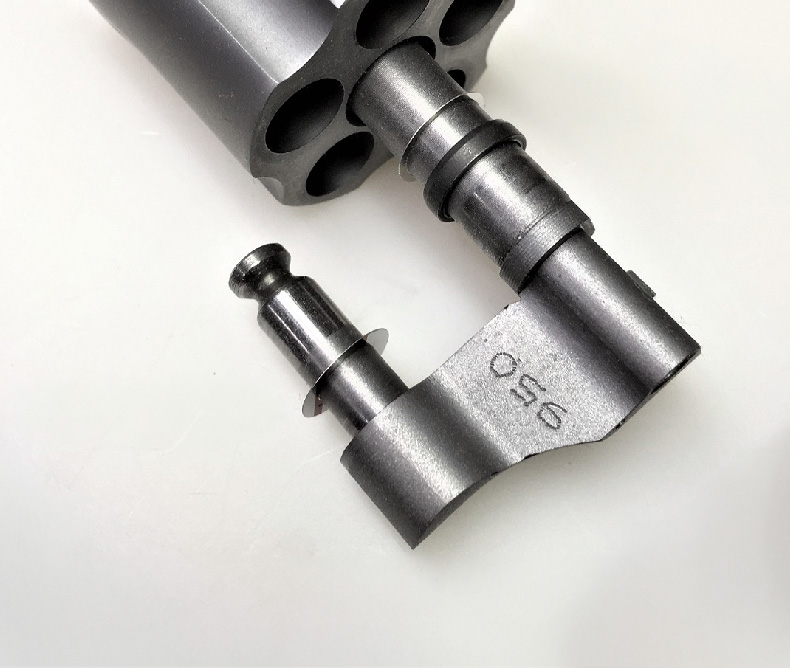
Basic Parts of a Rifle
Rifles are long guns designed for accuracy at longer ranges. They come in various types, from bolt-action to semi-automatic. Let’s break down the parts that make up a rifle.
Butt Stock
This is the rear portion of the stock that rests against your shoulder when firing. It often includes a butt plate or recoil pad to help manage the rifle's kick.
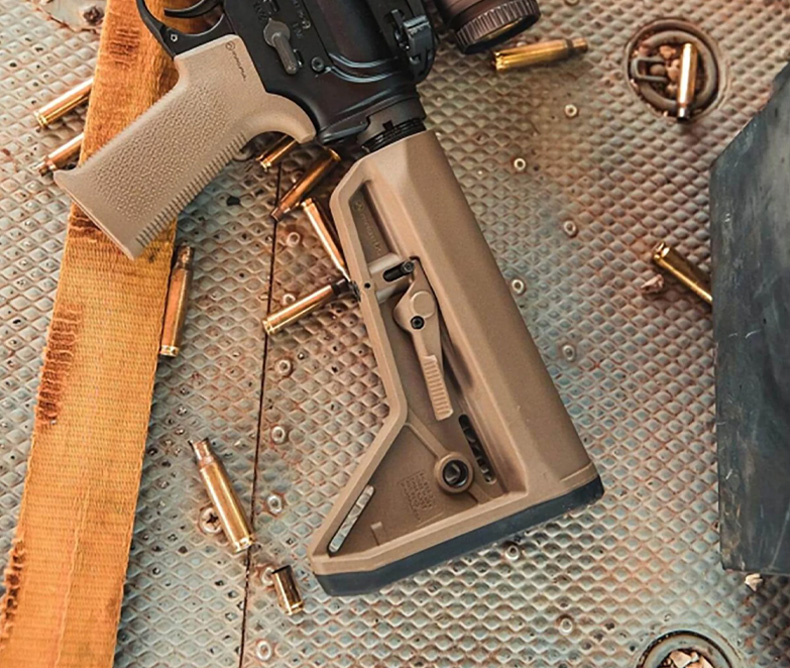
Bolt
The bolt is a crucial component in many rifle actions, particularly in bolt-action rifles. It's responsible for loading a cartridge into the chamber, sealing the chamber during firing, extracting the spent cartridge case, and ejecting it from the rifle. The bolt typically consists of several parts, including the bolt body, bolt handle, extractor, and ejector. In semi-automatic rifles, the bolt may be part of a larger bolt carrier group.
Gas System
In semi-automatic rifles, the gas system harnesses a portion of the high-pressure gas from the fired cartridge to cycle the action. This system typically includes a gas port in the barrel, a gas block, and either a gas tube (as in direct impingement systems) or a gas piston. The gas system is responsible for driving the bolt carrier rearward, which in turn extracts and ejects the spent cartridge case and chambers a new round.
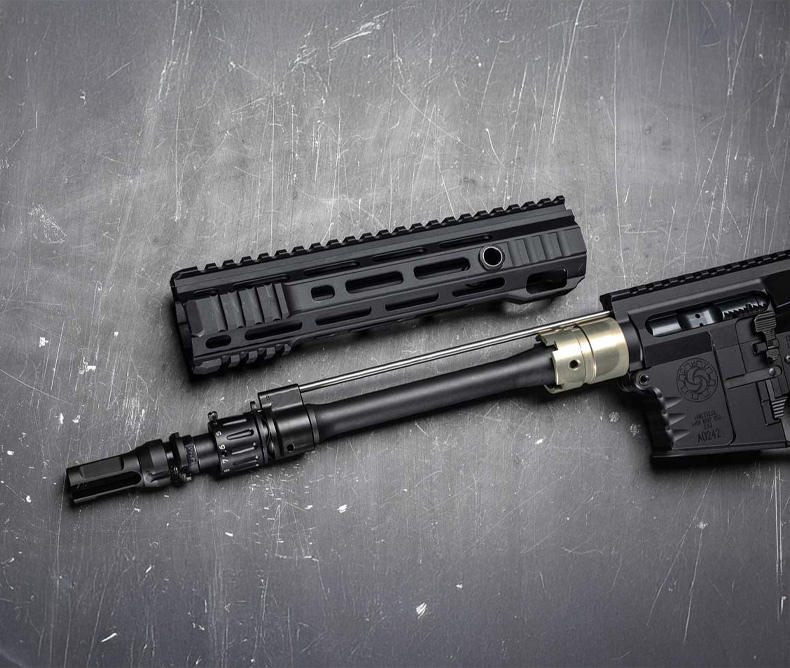
Handguard/Forend
The handguard, also known as the forend, is the part of the rifle that surrounds the barrel, providing a place to grip the rifle with the support hand. It serves multiple purposes: protecting the shooter's hand from the heat of the barrel, providing a mounting surface for accessories (in the case of railed handguards), and in some designs, contributing to the overall accuracy of the rifle by minimizing barrel vibration.
Parts of a Shotgun
Shotguns, another type of long gun, are versatile firearms known for their spread pattern of multiple pellets. Let's break down the key components of a typical shotgun.
Stock
Similar to rifles, the shotgun stock is the part you hold and shoulder. It can be made of wood, polymer, or other materials.
Forend
The forend is the forward portion of the stock that you grip with your non-trigger hand. In pump-action shotguns, the forend slides back and forth to cycle the action.
Cap/Latch
Known as a magazine cap on most pump actions and semi-automatic shotguns, or a forend latch on break actions, this is the piece that secures the forend to the gun.
Comb
The comb is the top portion of the stock where you rest your cheek when aiming.
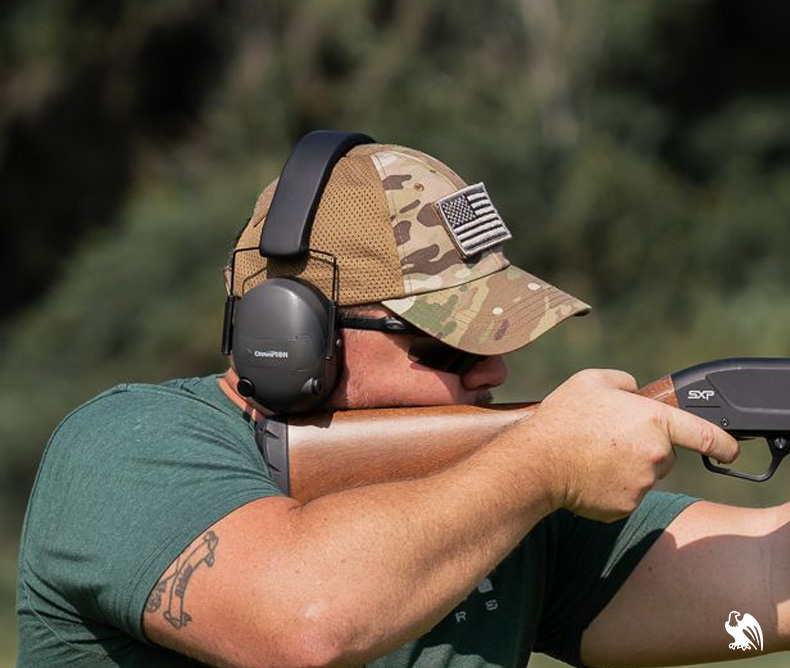
Butt
The butt is the rear end of the stock that rests against your shoulder. It often includes a recoil pad to help absorb shock.
Forcing Cone
This is the tapered section at the rear of the barrel that helps guide the shot charge from the chamber into the main barrel.
Choke
The choke is a constriction at the muzzle end of the barrel that controls the spread of the shot. Chokes can be fixed or interchangeable, allowing for different shot patterns.
Rib
Many shotguns feature a raised rib along the top of the barrel, which provides a flat sighting plane and can help reduce glare.
Magazine Tube
The magazine tube is a tubular magazine located beneath the barrel in pump-action and semi-automatic shotguns. It stores additional shells, typically in a spring-loaded stack, ready to be fed into the action. The capacity of the magazine tube can vary depending on the shotgun model and local regulations. Some tactical shotguns may feature detachable box magazines instead of or in addition to a magazine tube.
Lifter/Carrier
The lifter, also known as the carrier, is a crucial component in pump-action and semi-automatic shotguns. It's responsible for raising the shell from the magazine tube and positioning it in line with the chamber. As the action is cycled, either manually in a pump action or automatically in a semi-auto, the lifter elevates the shell, allowing it to be pushed into the chamber by the bolt.
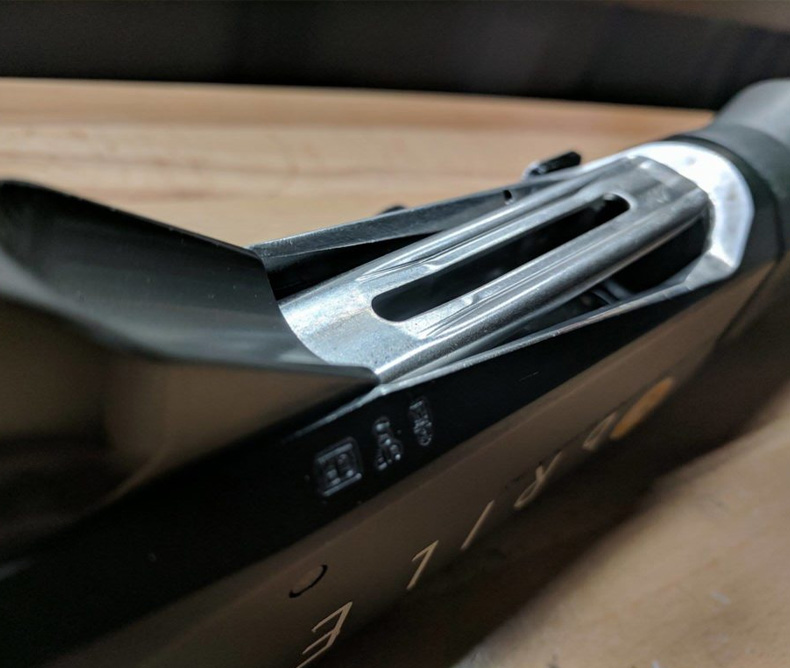
Summary
Understanding the parts of a gun is an essential step in becoming a knowledgeable and responsible firearm owner. Whether you're interested in pistols, revolvers, rifles, or shotguns, each type of weapon has its unique set of components that work together to create a functional and effective weapon.
For further education on the lingo of the gun world, check out our Complete List of Firearm Terminology for everything you need to know if you’re a newbie.
By familiarizing yourself with gun parts names and their functions, you're not only enhancing your overall knowledge but also improving your ability to handle firearms safely and efficiently. This understanding can help you make informed decisions when choosing a firearm, assist in proper maintenance, and contribute to better shooting performance.
If you’re looking for a new IWB, OWB, or pocket carry holster for a pistol or revolver, head to our Holsters by Gun Model page for Kydex holsters that are custom-made for your weapon of choice.
Interested in items beyond holsters? Take a look at our Resources Page for links to recommended products like lights, lasers, first aid, maintenance, and more. Or, browse our selection of apparel, gun belts, and accessories. And be sure to visit our sister company, GeoGrit, to view our collection of durable, RFID-blocking minimalist wallets.
To stay up-to-date on all the latest Vedder Holsters content and offerings, follow us on Facebook, Instagram, Twitter, YouTube, and TikTok. For more shooting and concealed carry resources, check out our blog or download our FREE e-book “The Concealed Carry Blueprint.” To discover which states honor your carry permit or to learn about CCW laws across the U.S., explore our interactive Reciprocity Map.
*This page contains affiliate links. When you purchase a product included on this list, we receive a commission at no extra cost to you.
This article is provided for informational purposes only. Any activity involving firearms is potentially dangerous and could result in property damage, serious injury, disabling injury or death. All firearms must be handled in a responsible manner and in accordance with applicable law. The author disclaims any responsibility for the accuracy, misuse of, or misinterpretation of information contained in this article.
